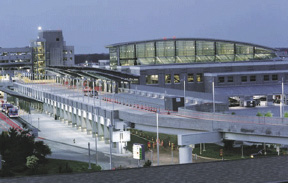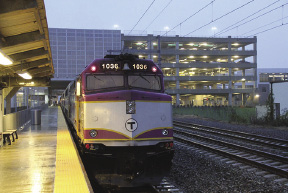Centrally located in southern New England, Warwick offers the convenience of city living with a close-knit, small town feel and myriad economic development opportunities within its diverse commercial base.
Warwick, located in Kent County, is the second largest city in the state, with a population of 82,672 at the 2010 census. Its mayor has been Scott Avedisian since 2000. Founded by Samuel Gorton in 1642, Warwick has witnessed major events in American history.
Warwick is comprised of more than 30 villages that reflect their community's early history and each have their own unique place in their shared heritage. Changes to their zoning ordinance are giving the city an ability to address the intrinsic characteristics of an established village to help revitalize areas. New parking and setback regulations and promotion of the villages as "live/work" centers are meant to increase pedestrian activity, encourage more physically active lifestyles, support environmental initiatives and provide valuable, local business opportunities and unique residential opportunities while retaining their heritage and sense of place.
With close proximity to I-95 and 295, more marinas and moorings than any Rhode Island community, and home to T.F. Green Airport and the InterLink intermodal train station, Warwick is one of the state's most easily accessible communities.
The city will capitalize on those myriad multi-modal opportunities as it revitalizes 95 acres surrounding the airport and train station. Known as the Warwick Station Development District, the area offers redevelopment of up to 1.5 million s/f within the district and potential for up to an additional 2 million s/f of office/hotel development in an adjacent area. Additionally, a combination of residential and general office uses, service-based industries such as health clubs, hotels, tailoring, beauty salons, restaurants, child care facilities, museums and transportation-based industries would be permitted in both districts.
Warwick offers a diverse economy, with a large retail and service base, as well as a healthy mix of manufacturing. Its bustling Rte. 2 corridor features a variety of national and regional businesses as well as locally-owned enterprises. A strong partnership with the Central Rhode Island Chamber of Commerce also helps the city to promote and support the many small businesses that call Warwick home.
Thanks to the many private and public universities and colleges throughout Rhode Island, employers can find a highly-educated, skilled labor pool within a 50-mile radius to meet the needs of high-tech, biotech, defense and manufacturing industries. The cost of doing business here is also very favorable compared to other major cities in the region.
Those who wish to live and work in Warwick will find a diverse, affordable housing mix that offers single-family homes, high-quality condominiums and apartments in safe neighborhoods with exceptional schools. Salt and fresh-water ponds, beaches, miles of biking and walking trails, ice rinks, pools, golf courses and playgrounds are among the many recreational opportunities available.
Active non-profit organizations, neighborhood associations and faith and civic groups also add to the great quality of life. Ranked among the nation's safest communities, Warwick has also been listed as one of the 100 best communities to live in the nation.
For more information visit www.movetowarwickri.com.
Tags:
City of Warwick offers small town feel with an abundance of economic opportunities within diverse commercial base
March 28, 2013 - Spotlights










